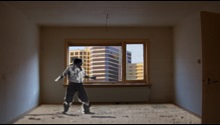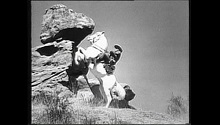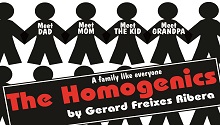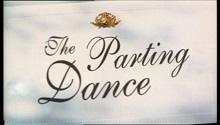Gerard Freixes
Gerard Freixes Ribera (Igualada, Barcelona) studied Art at Barcelona University. He currently combines work as a video editor with more personal experimental work, generally using manipulated archive images.
“Gerard Freixes. As though he was working in a Soviet laboratory in the Stalin era, Freixes manipulates audiovisual materials, erasing traces, characters, marks and shadows to create a new reality. By means of a patient task of erasing, pixel by pixel, in Alone Freixes has created an amusing satire about the man’s man: the cowboy, the lone wolf, who never finds his way home, who needs no one. It is a hyperbolic take on found footage that runs counter to traditional archive cinema: stripping back instead of accumulating.”
Gonzalo de Pedro. Dossier Noche en Blanco. 2010.
“What I like about Gerard Freixes’s work is the subtle meticulousness, the stoical humour, with which he adds or subtracts parts of the images; that which is surplus to or lacking in the stereotype. In The Homogenics (2010) he combines and superposes scenes from the Dick Van Dyke show, with a single, multiplied subject in this apocryphal, tight, absurd sit-com about a family that really is homogenic and monogeneric.”
Eugeni Bonet. Desmuntatge al dia programme (http://www.hamacaonline.net/blog/?p=1403)
Gerard Freixes Ribera (Igualada, 1978)
Cutting up long films and mediocre series to redeem them by manipulation in an attempt to produce modest but worthy works with different, more interesting layers of interpretation than the original: this is what Gerard Freixes does, reusing iconic material underlain by easily recognisable conventions, intervening in dialogues that are already under way. Because you have to put the screws on the tricks of the cinema as the public becomes accustomed to its already old illusions.
Any cinematographic edit has something of the collage about it, particular if it involves found material. But Freixes also erases or cuts out figures from the frames, more in keeping with the techniques of photographic collage. While it’s true that digital animation lacks the imprint of the human hand, that doesn’t mean that the digital is devoid of the craft and the demands of the patient, painstaking work of any clay or plasticine animator. Jan Švankmajer, as an anti-digital, would agree with Freixes when he says: “Part of the charm is the fact that it’s not perfect.”
Students of experimental cinema have started to take notice of his work: “What I like about Gerard Freixes’s work is the subtle meticulousness, the stoical humour, with which he adds or subtracts parts of the images; that which is surplus to or lacking in the stereotype” (Eugeni Bonet). “His works take a critical look at such relevant themes to today’s society as loneliness in Aislado (2007) and individualism in Alone (2008). The individualism of the superhero to the nth degree (Enrique Piñuel). Or: “Freixes is so meticulous in his technical work that you don’t see the trace of what has been removed” (Gloria Vilches).
Freixes weaves and dodges the legal impediments, and slips through the gaps in copyright—a choice that also contributes to the stylistic unity of his work—by means of a friendly appropriationism which nonetheless exudes a certain unease. As Clarín said: “The good anarchist, like the good Christian, challenges property, but does not steal.” Or, as others say: “copy-right = copy well.”
These works have a certain family resemblance. In one of them, the artist places Dick Van Dyke in a homogenic domestic discussion with himself in a video that has won prizes in numerous contests. In another he further underlines the problem of modern loneliness in a world of virtual sophistic masses in which each individual is a mouse. We are cursors that add up to form masses of clicks, millions of “Likes”, of solitary gazes lit by the light of a screen…
He acknowledges the influence on his work of Jan Švankmajer and other major Eastern European animators such as the great Zbigniew Rybczynski, but the mind of Gerard Freixes also allows for some imaginary influences that consist in inventing ideal artists to then imitate them. It’s the only way to prevent others copying your most beloved influences.
Félix Pérez-Hita (Video artist and cultural critic)





